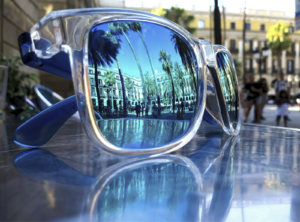
Are you looking for an effective and long-lasting way to remove unwanted hair? Sugaring and waxing are two popular methods of hair removal that can help you get the smooth, silky skin you desire. But what’s the difference between these two treatments? To understand which is right for your needs, it’s important to know how they work — and their similarities and differences. Read on to learn more!
The Tools
The first noticeable difference between these two approaches is the tools that are used. You can go now and see what kind of kits you need to get in order to use sugaring or waxing so you’re fully prepared for any procedure you choose. For sugaring, you need to use a paste made from natural ingredients like sugar, lemon juice, and water. You apply the paste on the skin in the same direction as your hair growth and then quickly remove it with your hands or a cloth strip in the opposite direction of your hair growth.
For waxing, you need to use warm wax that can be either synthetic or natural. This wax is applied against the growth of your hair and then quickly removed using paper strips or fabric strips in the same direction as your hair growth.
Application
The way these methods are applied is one of the main differences between sugaring and waxing. When it comes to the prior, all-natural ingredients such as sugar, lemon juice, and water are mixed together to make a paste-like consistency. The paste is then applied directly to the skin in small sections using a cloth strip that’s pulled away quickly against the direction of hair growth. This pulls out hairs from their roots while also exfoliating the skin at the same time.
Waxing uses both hot and cold waxes depending on the preferences of each individual client. Hot wax is best used for coarse or thicker hairs because it adheres better to them than other types of waxes can. Cold wax on the other hand requires no heating before it’s applied and is suitable for finer hairs.
Temperature
The temperature of sugaring is much lower than waxing. It uses room-temperature paste, while waxing typically requires warmed-up wax that can become hot if not used carefully. Sugaring can be more comfortable for the skin because the lower temperature helps avoid burning or irritation.

Waxing, on the other hand, needs to be kept warm in order to work properly, but this also means it has a higher risk of causing burns if left too long on the skin or applied at too high a temperature. For example, if the wax is left on too long it can become very hot and cause skin irritation or burns. Waxing also tends to be messier than sugar, as the warm wax needs to be applied more generously and quickly to adhere properly.
Chemical Composition
Another difference between sugaring and waxing is the chemical composition of the products used. The first usually involves a paste made from granulated sugar, lemon juice, and water that all naturally occur in edible items. This means that you can safely ingest your sugaring product if needed without any adverse reactions.
Waxing, on the other hand, uses synthetic wax that has been formulated to be heated and applied to the skin. Some commercially available waxes may contain added fragrances, but these are typically not harmful when used in moderation. These products also need to be discarded after each use as they cannot be reused because of their chemical composition.
Pain Sensitivity
The amount of pain felt during each method is different. Sugaring is usually less painful than waxing. With sugaring, a paste made from sugar, lemon juice, and water is applied to the skin in the opposite direction of hair growth and then removed in the same direction as hair growth. This makes it less likely to pull on the hairs or cause irritation to the skin. Waxing involves applying warm wax directly onto the skin where it sticks to hairs and pulls them out when removed quickly in one motion against hair growth which can be more painful than sugaring due to tugging on hairs.
Aftercare
Aftercare for sugaring includes avoiding hot showers, steam rooms, and saunas for 24 hours after the treatment. You should also abstain from swimming in chlorinated or saltwater pools for at least 48 hours.
Waxing, on the other hand, requires avoiding activities such as sun exposure and heat treatments like saunas and steam rooms for at least 24 hours after waxing. It is also important to avoid scented products on the area that was waxed, as this can cause irritation or bumps on the skin due to sensitivity.
Sugaring and waxing are two popular methods of hair removal that provide long-lasting results. When deciding which one is right for you, consider the tools used, application method, temperature applied to the skin during treatment, the chemical composition of the product used, and pain sensitivity associated with each treatment. Additionally, keep in mind what aftercare steps should be taken following your procedure so that you can enjoy beautifully smooth skin without any irritation or bumps caused by improper care.




